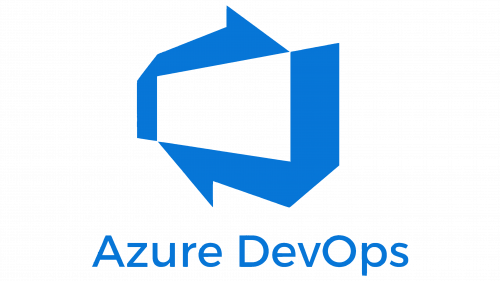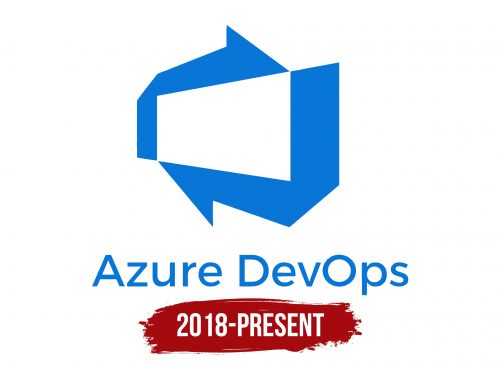The Azure DevOps logo symbolizes a continuous path of growth and improvement in digital technologies. It conveys the idea of an endless process that drives innovation and supports constant enhancement. The emblem highlights the versatility of the company’s services, emphasizing its active involvement at every stage of the application development lifecycle.
Azure DevOps: Brand overview
The history of Azure DevOps began in 2006 when Microsoft released Team Foundation Server (TFS) as part of Visual Studio 2005 Team System. TFS was designed as an integrated application lifecycle management (ALM) system, offering version control, task tracking, build management, and other tools for software development teams.
2010 Microsoft launched Team Foundation Server 2010, introducing key project management and testing improvements. This version implemented “work items,” aiding teams in managing tasks, bugs, and other development activities.
In 2012, Microsoft advanced into cloud-based development by releasing a cloud version of TFS, initially called Team Foundation Service. This allowed teams to use the system without managing their infrastructure. A year later, it was rebranded as Visual Studio Online to emphasize its deep integration with Visual Studio and to highlight Microsoft’s growing focus on cloud services for developers of all sizes.
2015 Team Foundation Server 2015 was introduced, supporting its version control system, TFVC, and Git. This showed Microsoft’s recognition of Git’s rising popularity among developers.
A major change occurred in 2018 when Visual Studio Team Services was rebranded, marking a broader focus on the entire DevOps process. This update introduced a suite of services: Pipelines for continuous integration and delivery, Boards for task management, Repos for code hosting, Test Plans for testing, and Artifacts for package management.
That same year, Microsoft acquired GitHub, raising questions about the future of these services. Microsoft assured users that both platforms would continue to develop, each catering to different needs and audiences.
In 2019, Microsoft released the on-premises version of the platform. This version brought many features from the cloud to users who needed a more localized solution, enhancing collaboration and performance for enterprise customers.
By 2020, Microsoft had integrated the platform with other Azure services, offering improved container support, Kubernetes capabilities, and application performance monitoring tools. The focus shifted further in 2021 towards enhancing security and compliance, with updates to auditing, access management, and DevOps security practices.
In 2022, additional updates focused on improving performance, particularly for large enterprises. These included enhanced workflow visualization tools, scalability for DevOps processes, and integration with artificial intelligence for predictive analytics.
The platform’s evolution reflects its adaptability to the changing needs of developers and organizations. What began as a project management tool has become a comprehensive platform supporting modern software development processes, including cloud computing, microservices, and containerization. Throughout its development, Microsoft has remained responsive to user feedback, continuously improving the platform’s capabilities to keep pace with the fast-changing technology landscape.
Meaning and History
What is Azure DevOps?
This set of development tools from Microsoft simplifies the entire software creation lifecycle—from concept to release. The platform combines continuous integration, deployment, project management, and version control in a cloud environment, providing adaptable services for various development approaches. Easily integrating with different tools, the platform allows the use of preferred technologies while maintaining the benefits of centralized management. It has become an indispensable tool in today’s dynamic development environment, helping teams create high-quality software faster and more efficiently through process automation, collaboration facilitation, and support for rapid iteration.
2018 – today
The Azure DevOps logo consists of simple yet symbolically rich elements that reflect the essence of the platform. Its central part is represented by two blue arrows pointing toward each other, creating a dynamic effect. These arrows hint at the continuous cycle of development and operations, which forms the foundation of the company’s philosophy—a constant interaction between Development and Operations. An infinite loop of improvements and collaboration governs this entire process.
The rectangle forming a screen in the center symbolizes a monitor or smartphone screen, referring to applications developed using Azure DevOps. The platform is designed to support the creation and management of software at every stage of its lifecycle—from development to deployment and ongoing maintenance.
The emblem’s blue color highlights its connection to cloud technologies, reflecting its place within the Microsoft Azure ecosystem. The platform is closely integrated with cloud solutions, allowing users to develop, test, and launch their applications in the cloud.
The platform’s name consists of two key terms: “Dev”—software development—and “Ops”—operations management. This combination emphasizes the platform’s primary goal—integrating development and operational processes for maximum efficiency.
The logo symbolizes the technical depth and scale of the platform, which helps optimize software development and deployment and ensures continuous interaction between all stages of the application lifecycle.





